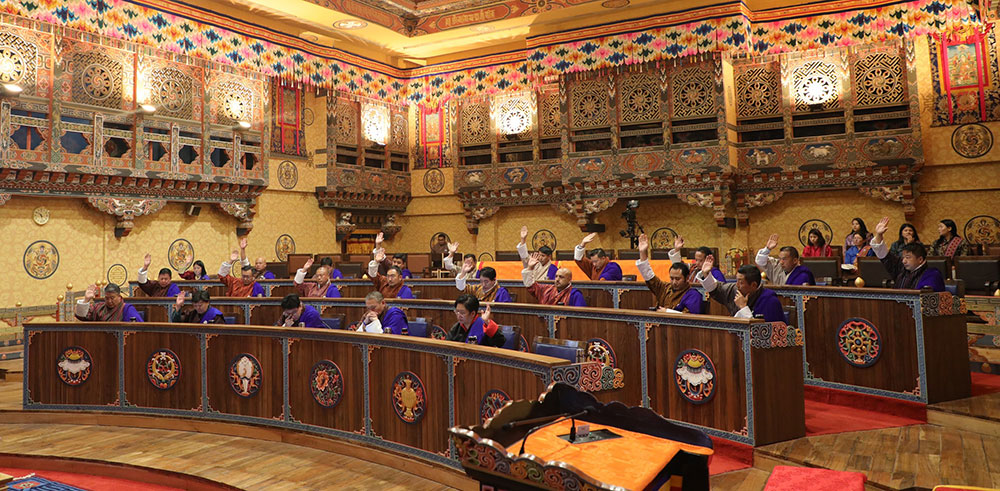… with four section recommendations
YK Poudel
The National Council adopted the Biological Corridor Nine (BC9) Bill 2023 yesterday with 23 ‘Yes’ votes. The Bill, which has four recommendations from NC, will now go to the National Assembly for re-deliberation.
The House recommended removing sections 5, 13, 14 and some sub-sections of 18. This according to the MPs is to ensure uniformity in the rules governing all biological corridors.
The proposed corridor connects Bumdeling Wildlife Sanctuary (BWS) and Sakteng Wildlife Sanctuary (SWS).
NC’s Natural Resources and Environment Committee (NREC) Chairperson, Ugyen Tshering presented that the corridor increases Bhutan’s protected area coverage to 52 percent. “The proposed corridor of 216 square km stretching over 60.2km would pass through parts of Toedtsho, Yalang, Khamdang, Bumdeling, and Yangtse gewogs in Trashiyangtse, and Phongmey gewog in Trashigang.”
A total of 363 households are living in Bumdeling, Toedtsho, and Yalang gewogs in Trashiyangtse falling within the proposed corridor. “The corridor will provide ecological connectivity between BWS and SWS—residents can venture into ecotourism, community tourism, homestays, and campsites even after the bill is passed as usual,” the chairperson said.
NC members on October 16 and 17 raised concerns about human-wildlife conflicts, restrictions on development activities, restrictions on land use and harmonisation of the Bill with existing relevant Acts.
As per section 13 of the Bill earlier adopted by the National Assembly, commercial activities such as quarrying, mining, logging and destroying wildlife are prohibited. The National Council recommended the removal of this provision.
Sarpang’s MP, Pema Tashi raised that 3.8 percent of the households in six gewogs inside the BC9 have private property. However, the owners will have issues while carrying out any economic activity. The MP asked the committee for additional plans from the government to assist these people.
Bumthang’s MP Kencho Tshering said that homestays in Trashiyangtse are already struggling due to minimum support and improvement in infrastructure. He said those living within the corridor could experience similar problems.
NREC chairperson said that, if the people’s private land falls under such a proposed area, people can request for land substitution. Moreover, some agencies are willing to invest to solve the human-wildlife conflict and assist local tourism.
Bhutan has eight existing biological corridors—the BC9 would mean that the country will have over 3,000 square kilometres of protected area up to 52 percent of the total area.


